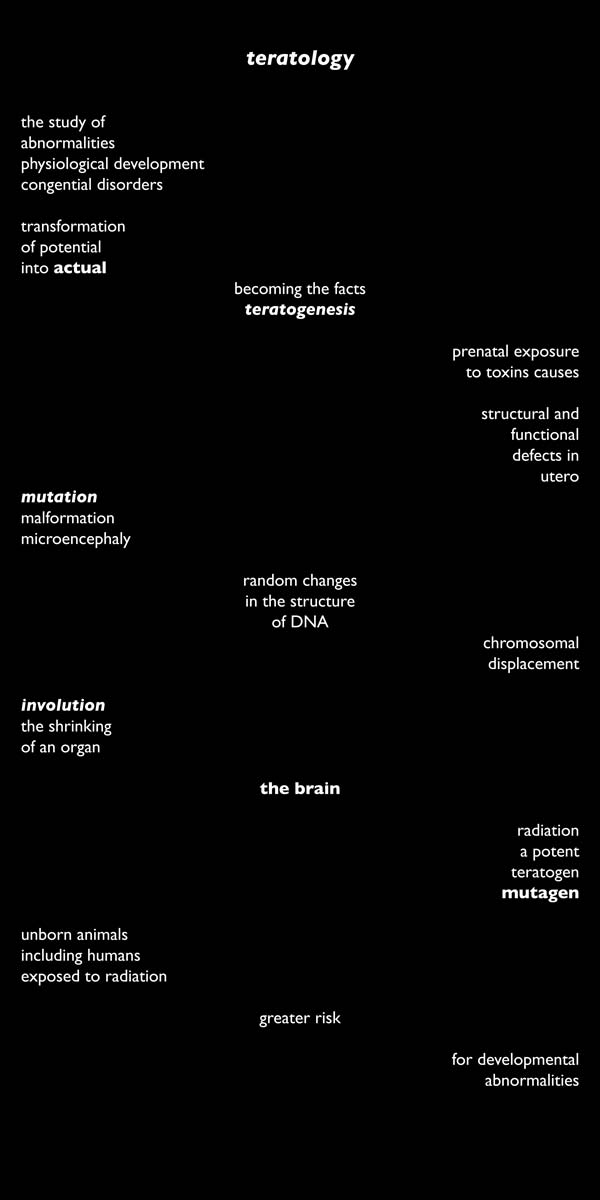Presented at The Daejeon Art Museum and the National Museum of Science, in Daejeon, South Korea (February–March 2015).
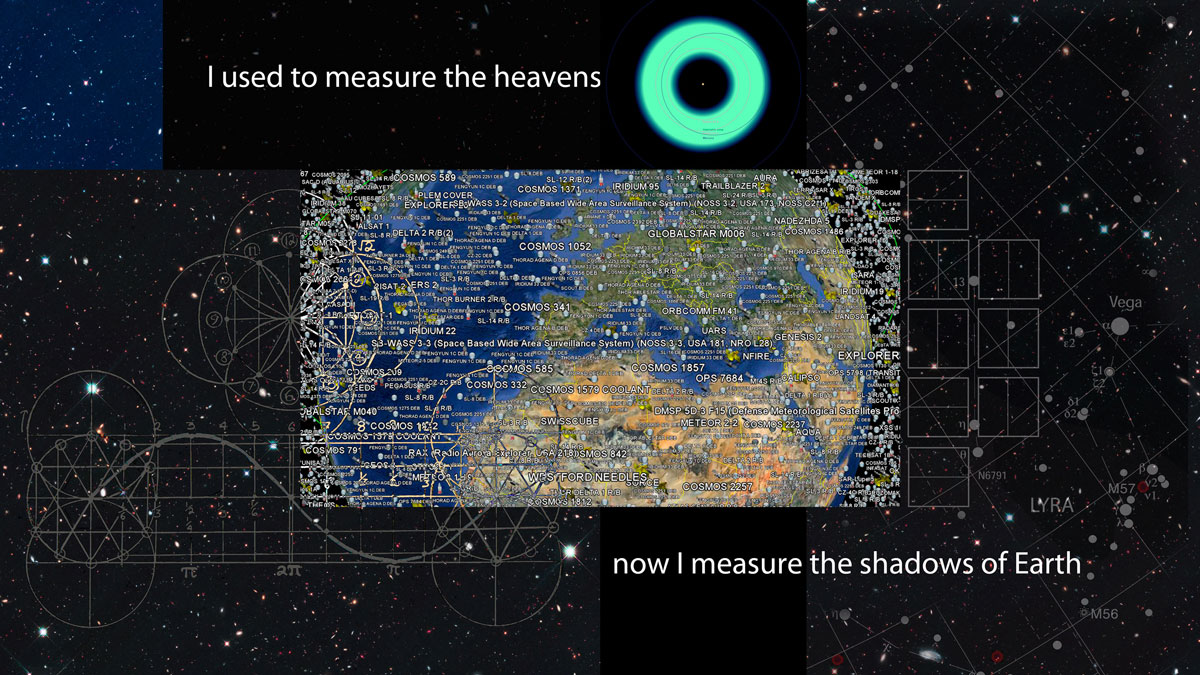
Waste of Space, 2015
Through tracking the invisible traces left behind by the nuclear weapons complex and its peaceful doppelgänger, the nuclear energy industry, my visual artwork forms an archive of our shared atomic legacy. By visualizing contamination, I shape this content by sharing information, raising awareness, and activating community participation in nonproliferation efforts. Over the past 20 years I have collaborated with hydrologists, geologists and environmental scientists.
In the exhibition, The Brain: Art, Science, Convergence, I am showing three single-channel videos that visualize the invisible, to make a statement about the effects of radiation on the human brain, as well as complex ecosystems and environments. There is a correlation between how we think about radioactive materials and how we behave that effects future generations.
The explosive atomic attack on Japan in 1945 has given way to an implosive global ecological war beyond national territories: contaminating water, polluting land, infiltrating the air—and the cells of bodies. We are still engaged in nuclear war through the use of depleted uranium weapons in Iraq, and the on-going development of new strategic nuclear weapons. Nuclear power accidents at the Fukushima Daiichi plant, Chernobyl and Three Mile Island compound this legacy. The byproduct of nuclear power is energy; the product is radioactive waste.
I am often asked how I got interested in this subject matter as an artist, educator and activist. In June 1980, just out of graduate school, I moved from California to New Mexico. On July 17, 1980, the Albuquerque Journal published an article on the United Nuclear Corporation’s Church Rock Uranium Mill Tailings Pond Spill, on Navajo land. The tailings pond breach occurred one year earlier, on July 16, 1979, exactly 34 years after The Gadget was detonated at the Trinity Site in New Mexico—the first atomic bomb test. The UNC spill was the largest release of radioactive toxins in recorded U.S. history. It occurred just fourteen weeks after the Three Mile Island (TMI) nuclear power plant meltdown near Harrisburg, Pennsylvania, spilling significantly more radioactive materials on land and in water than TMI. But few Americans are aware of the New Mexico event, perhaps due to its location on remote indigenous lands. As I read the newspaper in horror, I learned that radioactive tailings leaked into the Puerco River and that Navajo women who herded their sheep across the shallow river developed sores on their legs that would not heal: radiation burns. Later, babies were born with birth defects; then cancer clusters developed in nearby communities. My anger and unwillingness to tolerate this injustice activated my work, and I began zeroing-in on radioactive issues and atomic legacy sites where uranium mining, milling, plutonium production for nuclear weapons and the nuclear energy industry have contaminated water and land.
Accidents are cumulative realities not chance events. Exposing and exhibiting the accident, we are made aware of an indirect production of techno-science. We have a responsibility to future generations. We can begin to take responsibility by overcoming cultural anxiety about the hazards, risks and effects. How we think, or do not think about these risks, determines our sense of personal responsibility, behaviors, values and ethics.
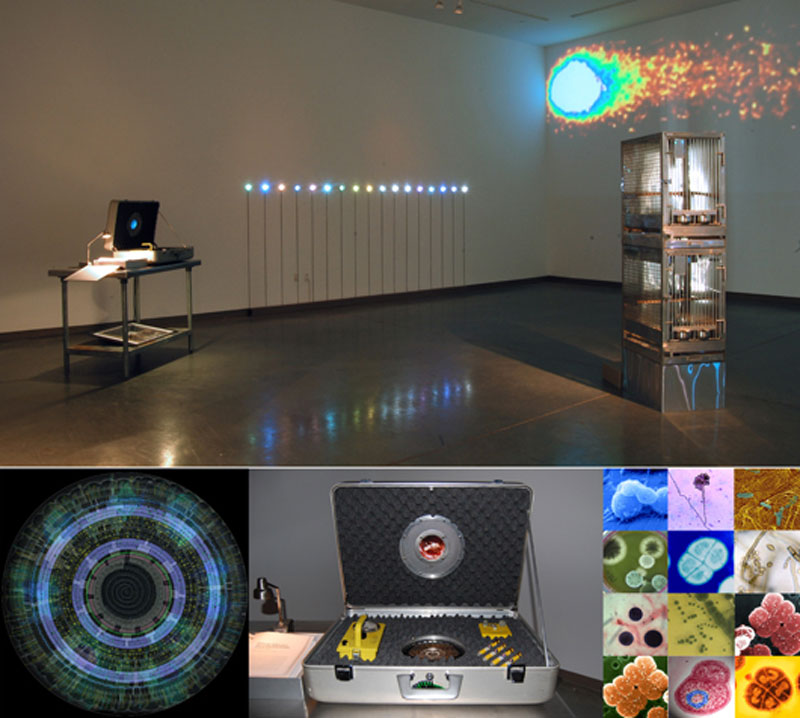
Halfway to Invisible, 2009
I would like to frame my work in this exhibition with a project from 2009, Halfway to Invisible, commissioned by Emory University. Because of Emory’s proximity to the Center for Disease Control, I chose the CDC as the intended audience by focusing on the epidemiological and genetic/biological impact of uranium mining in the American Southwest.
Between 1949 and 1989, these mines produced more than 225 million tons of uranium ore. This activity affected a large number of Native American Indian nations, including the Laguna, Navajo, Zuni, Southern Ute, Ute Mountain, Hopi, Acoma and other Pueblo cultures. Many of these peoples worked in the 4,000 mines, mills and processing plants in New Mexico, Arizona, Utah and Colorado. These workers were not only poorly paid, they were seldom informed of dangers nor were they given appropriate protective gear. The government, mine owners, scientific, and health communities were all well aware of the hazards of working with radioactive materials at this time.
Due to the Cold War demand for increasingly destructive and powerful nuclear weapons, these laborers were both exposed to and brought home large amounts of radiation in the form of dust on their clothing and skin. Epidemiologic studies of the families of these workers have shown increased incidents of radiation-induced cancers, miscarriages, and birth defects in their offspring.
Halfway to Invisible asks two questions about these events and how they may have influenced evolutionary processes and produced genetic casualties in specific communities:
Is our atomic legacy producing genotoxic effects in indigenous human populations?
If so, what is the extent of DNA damage, and how might this affect these populations in the future?
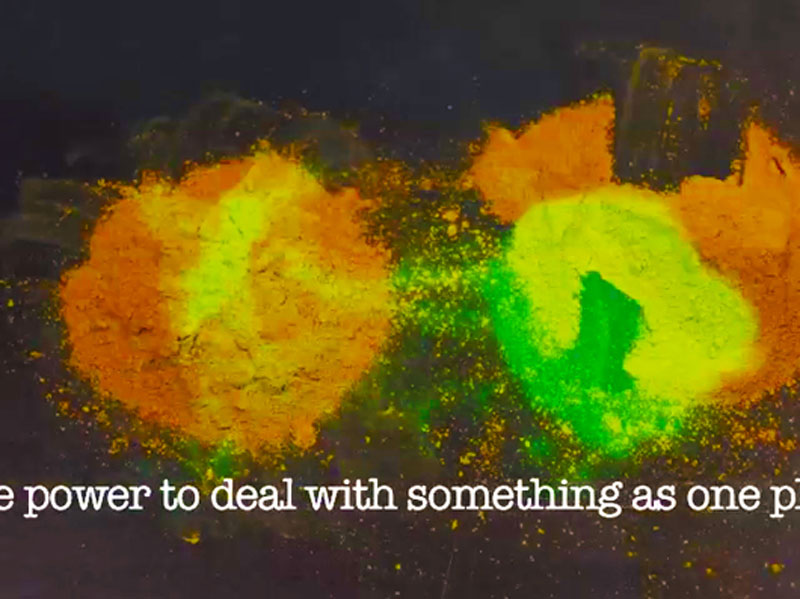
Disposition, 2011
Radioactive waste is never disposed of; it is dispositioned—placed out of sight and out of mind. Disposition is the word used by the military and industry rather than the word disposal. The dictionary definition is very telling:
- DISPOSITION |ˌdispəˈzi sh ən|
- A person’s inherent qualities of mind and character
- An inclination or tendency
- The action of arranging or ordering people or things in a particular way
- Military preparations, in particular the stationing of troops ready for attack or defense
- The action of distributing or transferring property or money to another
- The power to deal with something as one pleases
Disposition is a fluid situation not a fixed or final resting place. It is an approximate proximity of traces, a distribution of particles weaving together fields of radiotoxic matter through geological time and space. Dispositions are temporary locations involving multiple sites and confluences of flows, they represent and embody temporary clumps of matter, environmental attitudes and values. Suspended in this turbulence we find millions of particles, some colliding, others softly slipping past one another, slipping through holes in the system. Millions of tons of contaminated earth and billions of gallons of radioactive fluids comprise these complex fields of toxicity. Isotopes moving through strata and time result in cancer clusters and birth defects throughout the world. Dispositioned traces of radiation slip into our cells, into the spaces between our bodies, into our selves.
Sixty-nine years have passed since the first nuclear weapon was detonated at the Trinity site in the New Mexico desert, and 61 years since the nuclear “energy” industry metastasized from the military. The fact that no long-term plan exists for radioactive waste disposal is worthy of question.
The 2012 Blue Ribbon Commission Report on America’s Nuclear Future states, “this nation’s failure to come to grips with the nuclear waste issue has already proved damaging and costly.” TEPCO’s announcement that the Fukushima Daiichi reactors in Japan are in cold shutdown is questionable. TEPCO states it can’t find the fuel,” but it is well documented that TEPCO knew within days that the fuel melted through the containment vessels. The fuel is lost because it is no longer in the reactor. It has been rendered invisible. Radionuclides continue to spread a vast invisible shadow. The reactors continue to contaminate the Pacific Ocean, groundwater, marine life, and land. The plan to build a wall of ice, refrigerated into perpetuity is fiction science, and science fiction. And it is not carbon neutral, clean and green, at all.
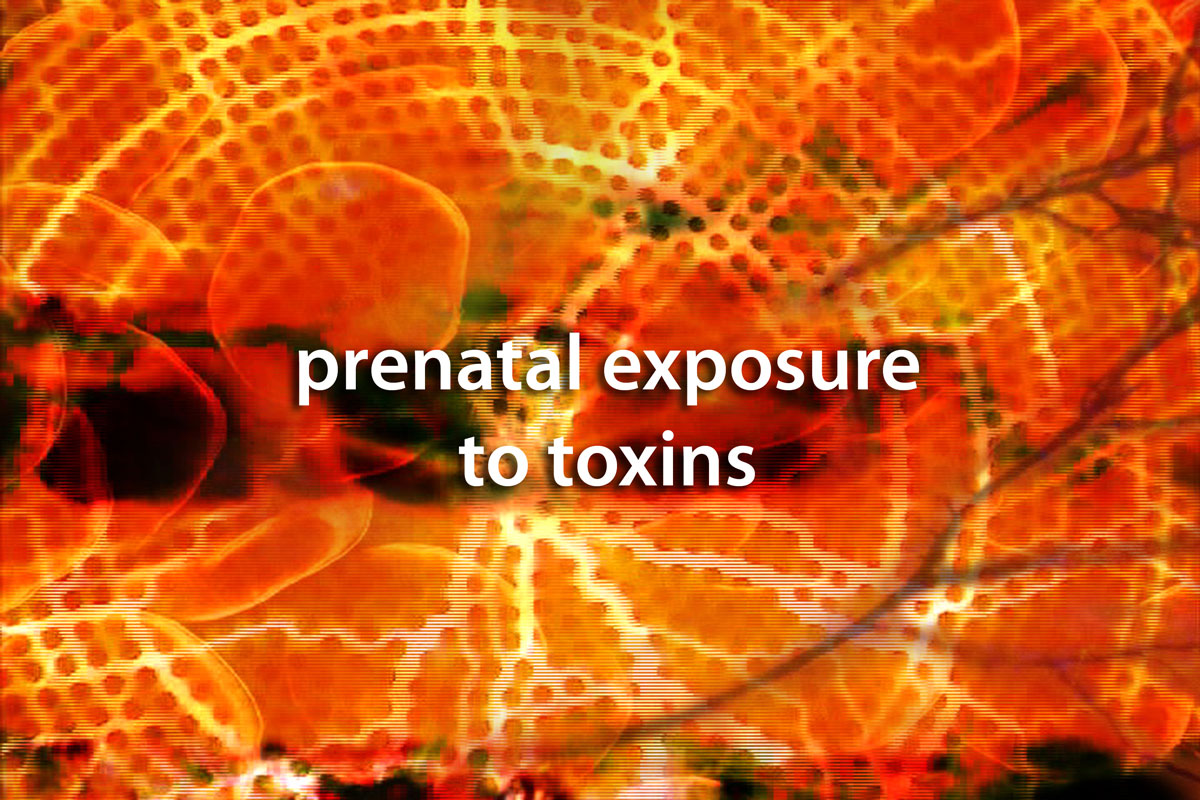
Teratology, 2015
The TERATOLOGY video in this exhibition sheds light on scientific studies of abnormalities of the physiological development and congenital disorders in human fetuses caused by prenatal exposure to radiation. During organogenesis and the early fetal development stage, structural and functional defects are at higher risk, causing mutations and malformations, such as chromosomal displacement. Radiation is a potent teratogen that can cause involution, the shrinking of organs, including the brain, and other developmental abnormalities.
Exposure to radiation poses disproportionate risk for women and children. The U.S. National Academy of Sciences report, Biological Effects of Ionizing Radiation, discloses that no safe dose of ionizing radiation exists, and that women have 40-60% greater likelihood of developing fatal cancers, children are more vulnerable than adults, and girls are twice as likely to develop cancer than boys.
Unborn babies exposed to radiation are at higher risk of developing brain malformation, mutations, microencephaly, mental retardation, behavioral alteration and intellectual disabilities. The central nervous system, and neuron cells are particularly susceptible to radiation exposure, perhaps due to the complexity of these systems. Radiation can cause neuronal cell death, incorrect connections between cells and mutated dendritic development.
But all life forms are vulnerable, not just human beings. All mammal brains are sensitive to radioactivity, perhaps all species. Radiation from weapons testing and ongoing releases from Fukushima present internal exposures because radiation bioaccumulates up the food chain. The true costs of clean, green, cheap nuclear energy must take into account the front end and back end of the process, and the cost to the health of all species. The National Cancer Institute of the U.S. Department of Health reports that exposure to radiation from nuclear weapons testing during the Cold War is a worldwide issue of significant concern. Many governments have long denied that the magnitude of cancers and other radiation-related diseases has kept many of those affected from receiving necessary care and compensation.
We are all affected. Strontium-90 from weapons testing is in our teeth and bones, Cesium-137 from Fukushima is in our tissues, our muscles. Radiation does not stop at international borders. Each and every weapons test and nuclear accident is recorded in the ice of Antarctica. Scientists have monitored these traces in ice core samples. We all are test subjects of the Atomic Age.
The URANIUM DAUGHTERS video in this exhibition draws attention to the dark, inverse form of alchemy of the Atomic Age. Responding to the ongoing Fukushima meltdowns the video illuminates the 4.47 billion-year half-life decay cycle of Uranium-238 superimposed onto thermographs and news footage. As uranium decays over geological time, it transmutes into “uranium daughters” that cascade into other elements and finally to stable Lead-206. As we are learning, when climate change occurs and vulnerability spectrums shift, nuclear sites and the life forms surrounding them are at increased risk.
The WASTE OF SPACE video in this exhibition points to the poetic science of the 17th Century astronomer and mystic Johannes Kepler who decentered the world through his radical theories of astronomy and harmonics. Kepler is analyzed on metaphorical, historical, cosmological, and environmental levels. Contrasting the spectrum from his cosmos of harmonic interactions of objects in space, to the disharmony of colliding space junk, images from his treatise, Harmonices Mundi, and photographs of shadows cast by these diagrams, are superimposed onto footage from the Kepler Space Telescope, launched to search for habitable Earth-like planets. A third layer of meaning is added: the problem of radioactive orbital debris.
The Cold War began within two years of the end of World War II, in which the USSR and US Superpowers became engaged in a decades-long nuclear weapons build up. In December 1953, U.S. President Eisenhower announced the Atoms for Peace program launching the international nuclear energy industry; the use of radioactive materials and atomic power for peaceful purposes. By 1955, the Cold War escalated into a race to control space, when both the US and USSR announced their intentions to launch artificial satellites. Sputnik 1 and 2 were launched by the USSR in 1957, followed by the US launches of Explorer 1, 2, Vanguard 1, and Pioneer 1 in 1958. The first space probe with a nuclear power system, a radioisotope thermoelectric generator (RTG) containing plutonium, was launched in 1961, and dozens have been launched in subsequent decades. Several have reentered the atmosphere, crashing to Earth, distributing radioactive materials on land and sea. In orbit around the Earth are 21,000 fragments of space junk larger than 10cm; 500,000 pieces between 1 and 10 cm; and over 100 million particles smaller than 1 cm.
Kepler wrote: “I used to measure the heavens, now I measure the shadows of the Earth.” I am interested in Kepler as a model for what the philosopher Michel Serres describes as the Science of Mars versus the Science of Venus. Serres is making an argument that humankind went down the road of Mars, the god of war, rather than taking the path of the of Venus, goddess of love. Serres promotes the Science of Venus, as I believe Kepler would have as well. He writes: “Listen to the line that swirls and spirals. It is the revolution of life, voluptuousness, the Science of Venus chosen over that of Mars. The physics of the military troops and their rank-and-file formation of parallel lines is the physics of Mars. It is no more than the shimmer of a particular arrangement of human signs, not the mathematical reality of things. In Nature, living beings are born of flows.” Look at the patterns in the shape of our brains, the way our cells unfold. The Science of Venus. “Nature being born in smiling voluptuousness.”
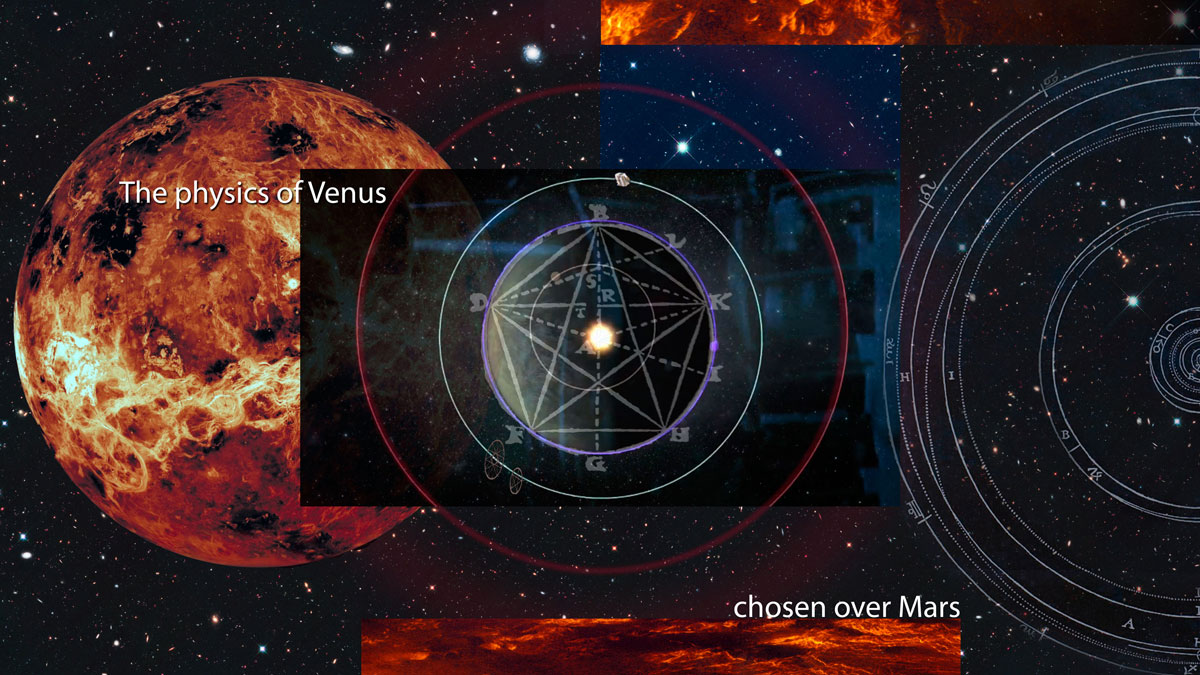
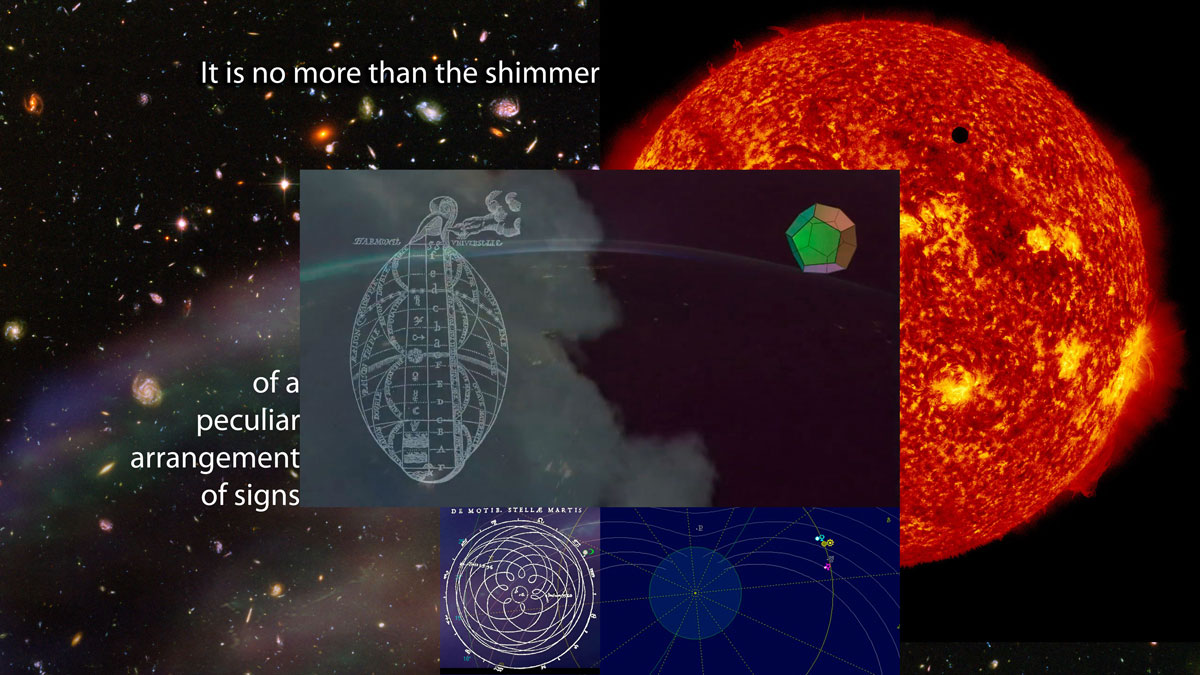
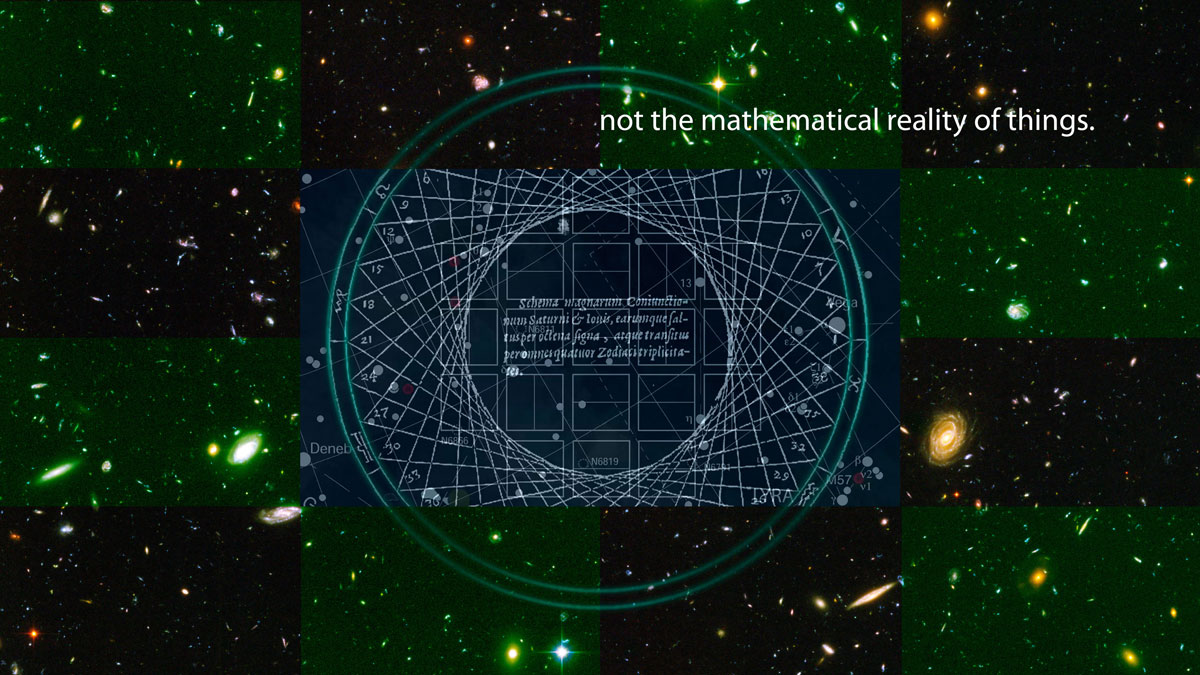
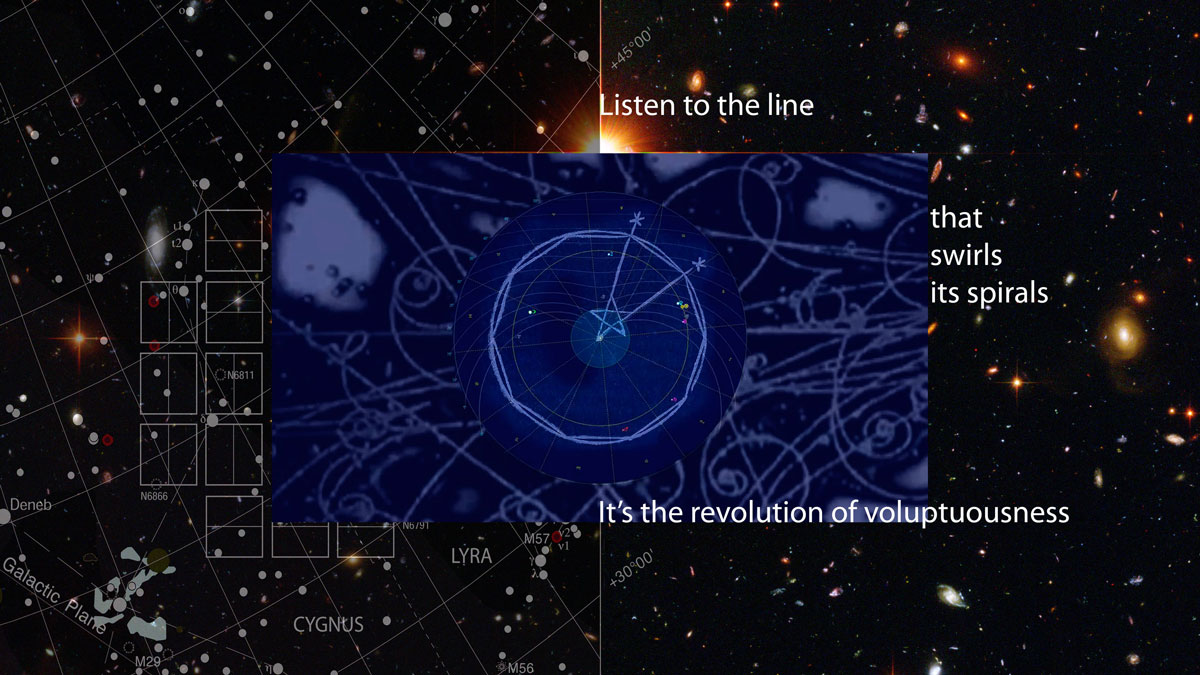
Waste of Space, 2015
The philosopher Brian Massumi asserts that art, especially activist art that deploys “affective expressions like anger and laughter are perhaps the most powerful because they interrupt a situation. They interrupt the “flow of meaning that’s taking place: the normalized interrelations and interactions that are happening and the functions that are being fulfilled”. Both the perception of beauty and expression of anger can force a situation to attention, it forces a pause filled with an intensity that is often too extreme to be expressed in words” Something positive can result—a reconfiguration, a change of consciousness. A contribution to future generations.
Massumi believes we have to “live our immersion in the world, really experience our belonging to this world, which is the same thing as our belonging to each other, and live that so intensely together that there is no room to doubt the reality of it.” It is self-affirming and life-affirming to live with intensity. It is to act from a “belief system that is not the belief about being in the world. It IS a being in the world. Being in this imperfect world, with its warts and wrinkles, without denial, rather than in some imagined perfect world or a better utopian world. It is an “empirical kind of belief. Ethical, empirical—and creative—because your participation in this world is part of a global becoming.”
Through this intensity of attention, the act of caring, a non-violent ethic emerges. Small interventions by artists and scientists can be “amplified across the web of connections to produce large effects—the butterfly effect.” A little perturbation, a little nudge or tweak may change the way human beings understand how things are interrelated. A small gesture of caring can change the world.
Notes
TERATOLOGY (2015) has been shown at the Daejeon Museum of Art (South Korea) and INOVA: Institute of Visual Arts (Milwaukee, WI). WASTE OF SPACE (2015) has been shown at the Simons Center for Geometry & Physics (Stony Brook, NY), the Daejeon Museum of Art (South Korea), and the Roswell Museum (Roswell, NM). URANIUM DAUGHTERS (2015) has been shown at the Daejeon Museum of Art (South Korea) and INOVA: Institute of Visual Arts (Milwaukee, WI).
